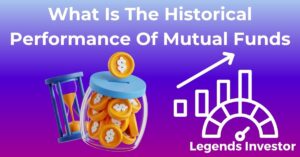Introduction to Mutual Funds: The Basics
Investing can be a daunting task, especially for beginners. Mutual funds offer an accessible and diversified way to enter the investment world. This guide will help you understand the basics of mutual funds, how they work, and how to choose the right one for your investment needs.
Definition of Mutual Funds and Their Primary Purpose
Mutual funds are investment vehicles that pool money from multiple investors to purchase a diversified portfolio of securities such as stocks, bonds, and other assets. The primary purpose of mutual funds is to provide investors with a diversified investment option managed by professional fund managers, thereby spreading risk and offering the potential for stable returns.
Brief History and Evolution of Mutual Funds
Mutual funds have a long history, dating back to the 18th century in the Netherlands. The modern mutual fund industry began in the United States in the 1920s. The concept gained popularity due to its ability to provide small investors access to professionally managed, diversified portfolios. Over the decades, mutual funds have evolved to include various types, catering to different investment goals and risk appetites.
The Diversity of Mutual Fund Types Available
Mutual funds come in many types, each with distinct characteristics and investment objectives. These include:
- Equity Funds: Invest primarily in stocks.
- Bond Funds: Focus on fixed-income securities.
- Hybrid Funds: Combine stocks and bonds.
- Index Funds: Track specific market indices.
- Sector Funds: Focus on specific industries or sectors.
- Money Market Funds: Invest in short-term, low-risk securities.
Unpacking How Mutual Funds Work
The Structure of Mutual Funds: Pooling Investors’ Money
Mutual funds operate by pooling money from many investors to create a substantial capital base. This pooled money is then used to buy a diversified portfolio of securities. This structure allows individual investors to access a broader range of investments than they could on their own.
Role of the Fund Manager in Selecting Securities
A professional fund manager oversees the mutual fund, making decisions about which securities to buy or sell based on the fund’s investment objectives. The fund manager’s expertise and strategic decisions are crucial to the fund’s performance.
Explanation of Net Asset Value (NAV)
The Net Asset Value (NAV) represents the per-share value of the mutual fund. It is calculated by dividing the total value of the fund’s assets minus its liabilities by the number of outstanding shares. NAV is typically calculated at the end of each trading day and reflects the fund’s performance.
The Advantages of Investing in Mutual Funds
Diversification of Investment Portfolio
One of the primary benefits of mutual funds is diversification. By pooling money from many investors, mutual funds can spread investments across a wide array of assets, reducing the risk associated with individual securities.
Accessibility for Individual Investors
Mutual funds are highly accessible, with relatively low minimum investment requirements. This makes them suitable for individual investors who may not have substantial capital to invest.
Professional Management of Funds
Investors benefit from the expertise of professional fund managers who analyze market trends, economic conditions, and individual securities to make informed investment decisions.
Risks Associated with Mutual Funds
Market Risk and Its Impact on Investments
While mutual funds offer diversification, they are still subject to market risk. The value of the fund’s investments can fluctuate due to changes in market conditions, potentially leading to losses.
The Potential for Underperformance
Not all mutual funds perform well. Some may underperform their benchmarks or other comparable funds due to poor investment decisions or unfavorable market conditions.
Understanding Fees and Their Effect on Returns
Mutual funds charge various fees, which can impact overall returns. These fees include management fees, administrative fees, and distribution fees. Understanding these costs is crucial for evaluating the true performance of a fund.
Types of Mutual Funds and Their Characteristics
Equity Funds for Growth-Oriented Investors
Equity funds invest primarily in stocks, aiming for capital appreciation. They are suitable for investors seeking long-term growth but come with higher volatility and risk.
Bond Funds for Income-Focused Portfolios
Bond funds invest in fixed-income securities like government and corporate bonds. They provide regular income and are generally less volatile than equity funds, making them suitable for income-focused investors.
Hybrid Funds: A Combination of Stocks and Bonds
Hybrid funds, or balanced funds, invest in both stocks and bonds. They offer a blend of growth and income, providing diversification within a single fund.
Making the Choice: Selecting the Right Mutual Fund
Assessing Risk Tolerance and Investment Goals
Before selecting a mutual fund, assess your risk tolerance and investment goals. Are you looking for long-term growth, income, or a balanced approach? Understanding your objectives will help you choose the right type of fund.
Analyzing Fund Performance History
Review the performance history of potential mutual funds. Look at their returns over different periods and compare them to benchmarks and peer funds. Consistent performance over time is a good indicator of a fund’s reliability.
Evaluating Fund Management and Fees
Consider the expertise of the fund manager and the fund’s fee structure. Lower fees can significantly impact long-term returns. Compare the expense ratios of different funds to find the best value.
Fund Fees and Expenses: What You Need to Know
Types of Fees: Load vs. No-Load Funds
- Load Funds: Charge a sales commission either at the time of purchase (front-end load) or when shares are sold (back-end load).
- No-Load Funds: Do not charge any sales commissions, making them more cost-effective for investors.
Expense Ratios and Their Long-Term Impact
The expense ratio represents the annual fees expressed as a percentage of the fund’s assets. Even small differences in expense ratios can significantly affect long-term investment returns due to the compounding effect.
How Fees Affect Overall Investment Returns
High fees can erode the returns of a mutual fund. For example, a fund with a 2% expense ratio will lose a significant portion of its returns to fees over time. Opting for funds with lower fees can enhance overall returns.
Joining the Pool: How to Buy into Mutual Funds
A Step-by-Step Guide to Purchasing Mutual Fund Shares
- Research: Identify the mutual funds that align with your investment goals.
- Select a Brokerage: Choose a brokerage platform that offers mutual funds.
- Open an Account: Set up a brokerage or mutual fund account.
- Fund Your Account: Transfer money into your account.
- Place an Order: Buy shares of the selected mutual fund through the brokerage platform.
The Role of Brokerage Accounts in Mutual Fund Investments
Brokerage accounts serve as intermediaries, providing access to a wide range of mutual funds. They offer tools and resources for researching and purchasing mutual fund shares.
Timing Considerations for Buying Mutual Funds
Mutual funds are priced at the end of each trading day based on the NAV. Be mindful of timing when placing orders, especially during periods of market volatility.
The Road Ahead: Monitoring and Managing Your Mutual Fund Investment
Best Practices for Reviewing Mutual Fund Performance
Regularly review your mutual fund’s performance compared to benchmarks and peer funds. Look at returns, fees, and any changes in the fund’s management or strategy.
When to Hold, Sell, or Rebalance Your Mutual Fund Holdings
Evaluate your holdings periodically to ensure they align with your investment goals. Rebalance your portfolio if necessary to maintain your desired asset allocation.
Tax Implications of Mutual Fund Investments
Mutual fund distributions, including dividends and capital gains, may be subject to taxes. Be aware of the tax implications and consider tax-efficient investment strategies to maximize your after-tax returns.
Conclusion: Embarking on Your Mutual Fund Investment Journey
Mutual funds provide a versatile and accessible way for investors to achieve diversification and professional management. By understanding the basics, evaluating your options, and monitoring your investments, you can make informed decisions that align with your financial goals.
As you embark on your mutual fund investment journey, continue to educate yourself, stay informed about market trends, and seek professional advice when needed. With the right knowledge and strategies, mutual funds can be a valuable tool for building a secure financial future. Happy investing!



